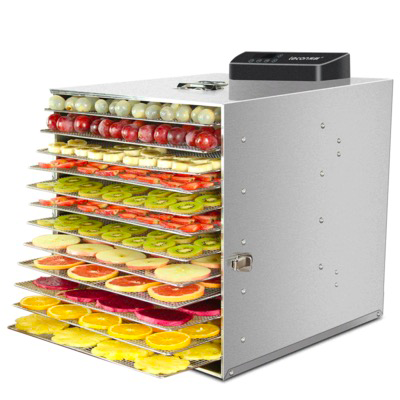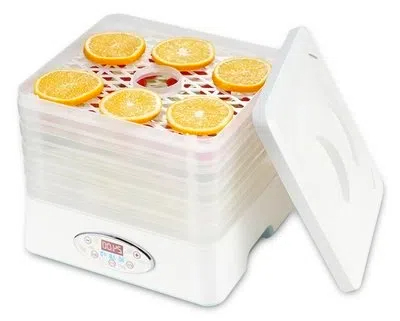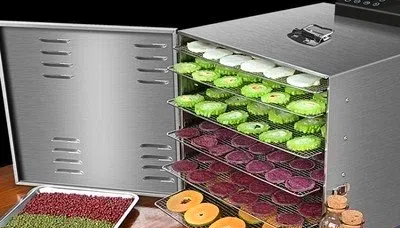
Content Menu
● What is a Heat Pump Dryer?
● Advantages of Heat Pump Dryers
● Disadvantages of Heat Pump Dryers
● Cost Analysis
● Performance Comparison
● Environmental Impact
● User Experience
● Conclusion
● Frequently Asked Questions
>> 1. How much energy does a heat pump dryer use compared to traditional dryers?
>> 2. Can I install a heat pump dryer anywhere in my home?
>> 3. How often do I need to clean the filters in a heat pump dryer?
>> 4. Are heat pump dryers noisy?
>> 5. What is the lifespan of a heat pump dryer?
Heat pump dryers have become increasingly popular as consumers look for energy-efficient alternatives to traditional drying methods. This article will explore the workings of heat pump dryers, their advantages and disadvantages, and whether they are worth the investment for your dry needs.

What is a Heat Pump Dryer?
A heat pump dryer is a type of clothes dryer that uses heat pump technology to dry clothes efficiently. Unlike traditional vented dryers, which expel hot air outside, heat pump dryers recycle the warm air within a closed-loop system.
- How It Works: The dryer draws in air from the surrounding environment, heats it using a compressor and refrigerant, and then circulates it through the drum containing wet clothes. The moisture is extracted from the air and condensed into water, which is either collected in a tank or drained away.
Advantages of Heat Pump Dryers
Heat pump dryers offer several benefits that make them an attractive option for many households:
- Energy Efficiency: Heat pump dryers use significantly less energy than traditional dryers. They can save up to 70% on energy costs compared to conventional models, making them an eco-friendly choice. This efficiency is particularly beneficial in regions with high electricity costs.
- Gentler on Clothes: These dryers operate at lower temperatures, which helps protect fabrics from damage and reduces wear and tear on clothing. This gentler drying process can prolong the life of your garments, keeping them looking new for longer.
- Versatile Installation: Since they do not require external venting, heat pump dryers can be installed in various locations, including small spaces or apartments. This flexibility makes them ideal for urban living where space may be limited.
- Cost Savings: Although the initial purchase price of a heat pump dryer is higher than that of conventional dryers, the long-term savings on energy bills can offset this cost over time. Many users report that their investment pays off within a few years due to reduced utility bills.
Disadvantages of Heat Pump Dryers
Despite their advantages, heat pump dryers do have some drawbacks:
- Higher Initial Cost: The upfront cost of heat pump dryers can be two to three times more than standard models. This may deter some consumers from making the switch, especially if they are on a tight budget.
- Longer Drying Times: While they are energy-efficient, heat pump dryers generally take longer to dry clothes compared to traditional dryers. Users should expect drying times to be extended by about 15 to 30 minutes. This may not be ideal for those who need quick turnaround times for laundry.
- Maintenance Requirements: Regular maintenance is necessary to keep the dryer operating efficiently. This includes cleaning filters and ensuring proper drainage. Neglecting maintenance can lead to decreased efficiency and potential breakdowns.

Cost Analysis
When considering whether a heat pump dryer is worth it, it's essential to analyze the costs involved:
1. Purchase Price: Heat pump dryers typically range from $900 to $2,500 depending on brand and features. Premium models with advanced features may cost even more but often come with better warranties and customer support.
2. Energy Costs: On average, a heat pump dryer uses about 2.16 kWh per load, translating to approximately $88 per year in energy costs based on typical usage patterns. In contrast, traditional dryers can use up to 6 kWh per load, leading to annual costs upwards of $200.
3. Savings Over Time: Compared to traditional vented dryers that can cost upwards of $1,800 in energy over ten years, heat pump dryers can save consumers hundreds of dollars in electricity bills. Additionally, if you live in an area with time-of-use electricity rates, using a heat pump dryer during off-peak hours can further enhance savings.
Performance Comparison
To better understand the value of heat pump dryers, it's helpful to compare their performance with conventional drying methods:
| Feature | Heat Pump Dryer | Traditional Dryer |
|--------------------------------|------------------------------|-----------------------------|
| Energy Consumption | Low (2.16 kWh/load) | High (6 kWh/load) |
| Drying Time | Longer (15-30 mins more) | Shorter |
| Fabric Care | Gentle | Hotter temperatures |
| Installation Flexibility | Yes (no venting required) | No (requires venting) |
| Initial Cost | Higher ($900 - $2,500) | Lower ($400 - $1,200) |
This comparison clearly shows that while heat pump dryers may take longer to dry clothes and have a higher initial cost, their energy efficiency and fabric care capabilities make them an appealing option for many consumers.
Environmental Impact
In addition to personal savings, using a heat pump dryer has positive implications for the environment:
- Reduced Carbon Footprint: By consuming less energy than traditional dryers, heat pump dryers contribute to lower greenhouse gas emissions. This is particularly important as more consumers become environmentally conscious and seek ways to reduce their carbon footprints.
- Sustainable Practices: Many manufacturers are now focusing on sustainable production practices for heat pump dryers. This includes using recyclable materials and reducing waste during manufacturing processes.
User Experience
User experiences with heat pump dryers vary widely based on individual needs and expectations:
- Positive Feedback: Many users appreciate the energy savings and reduced wear on clothing due to lower drying temperatures. They also enjoy the flexibility of installation options.
- Negative Feedback: Some users express frustration with longer drying times or find that they need to run multiple cycles for larger loads. Additionally, some models may require more frequent maintenance than others.
Conclusion
In conclusion, whether a heat pump dryer is worth it depends largely on your usage patterns and priorities. If you frequently use a dryer and are looking for ways to reduce your energy consumption and environmental impact, investing in a heat pump dryer may be beneficial. While they come with higher upfront costs and longer drying times, their efficiency and gentleness on fabrics can make them a worthwhile investment over time.
For those who prioritize quick drying times or have infrequent laundry needs, traditional dryers may still be preferable despite their higher energy costs. Ultimately, consumers should weigh their specific needs against the benefits offered by heat pump technology before making a decision.

Frequently Asked Questions
1. How much energy does a heat pump dryer use compared to traditional dryers?
Heat pump dryers use about 70% less energy than conventional vented dryers. They typically consume around 2.16 kWh per load compared to 6 kWh for traditional models.
2. Can I install a heat pump dryer anywhere in my home?
Yes! Heat pump dryers do not require external venting, allowing for flexible installation in various locations such as laundry rooms or closets.
3. How often do I need to clean the filters in a heat pump dryer?
It is recommended to clean the lint filter after every load and check the condenser unit every few months for optimal performance.
4. Are heat pump dryers noisy?
Most modern heat pump dryers operate quietly; however, some noise may occur during operation due to the compressor and fan systems.
5. What is the lifespan of a heat pump dryer?
Typically, heat pump dryers have a lifespan of around 10 to 15 years with proper maintenance.












